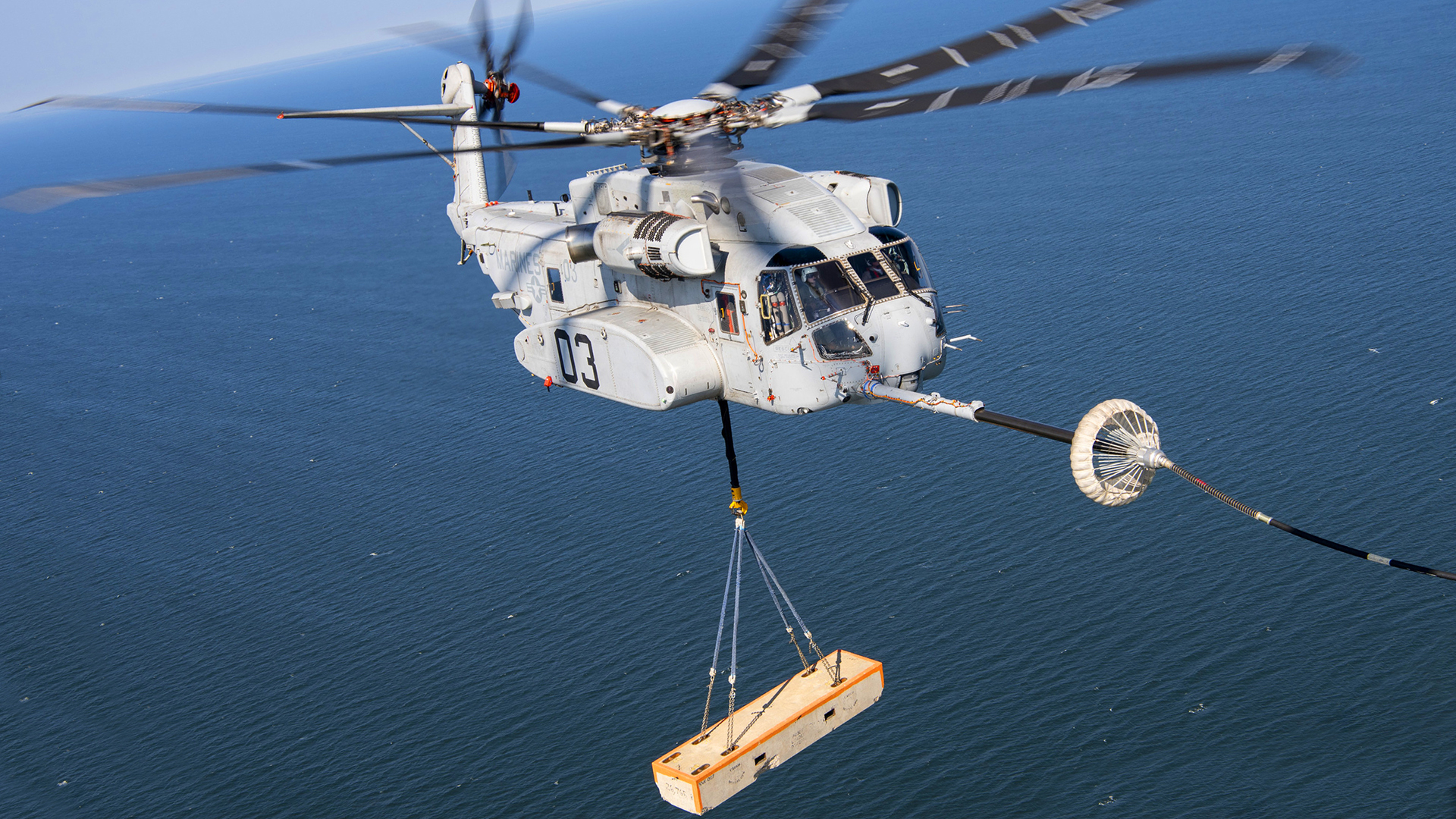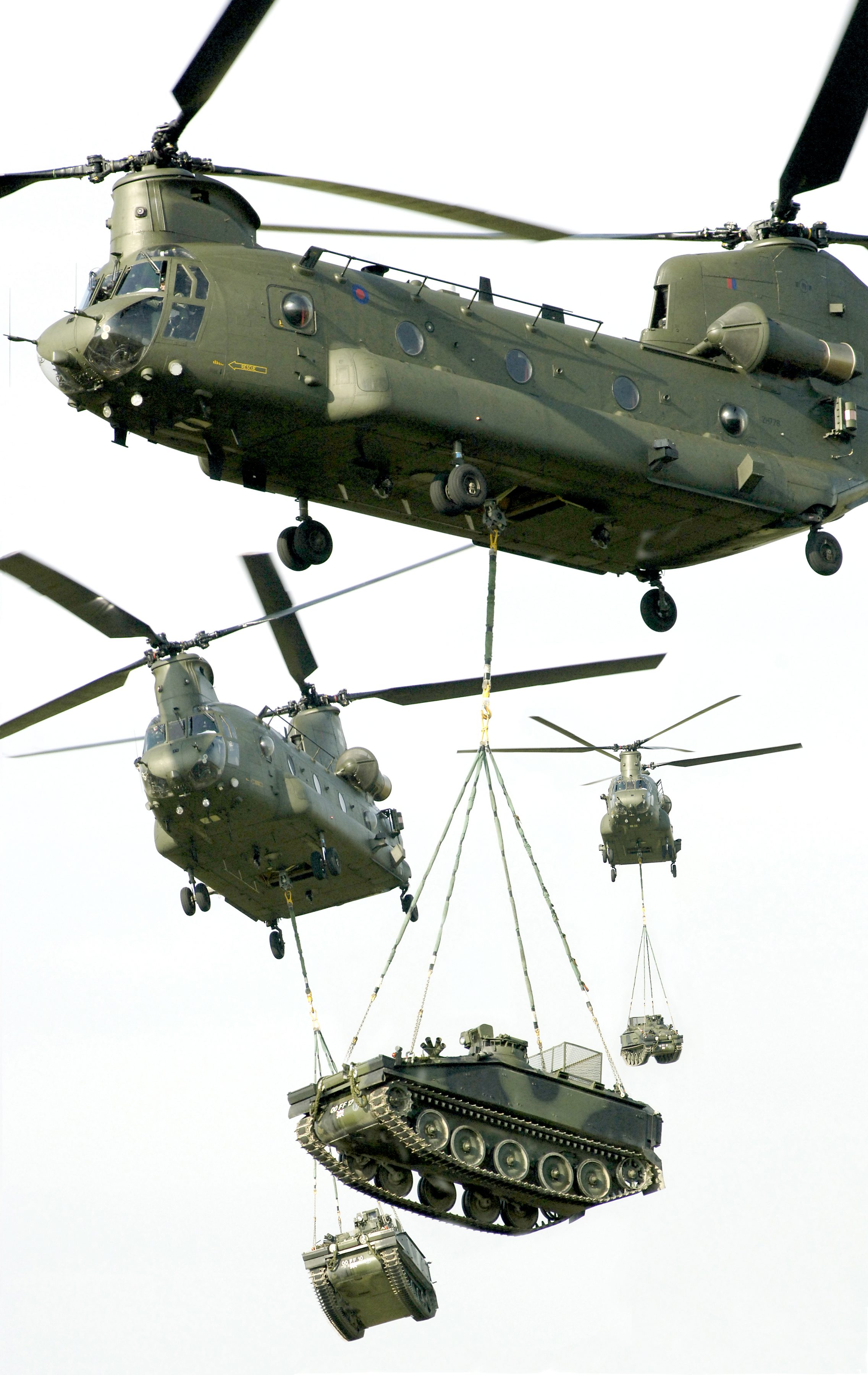Big Army Helicopter - The Boeing CH-47 Chinook is a tandem rotor helicopter designed by the American rotorcraft company Vertol and manufactured by Boeing Vertol. The Chinook is a heavy lift helicopter that is among the heaviest Western helicopters. His name, Chinook, comes from the Native American Chinook people of Oregon and Washington state.
The Chinook was originally made by Vertol, who began work in 1957 on a new tandem-rotor helicopter, designated the Vertol Model 107 or W-107. At the same time, the United States Department of Defense announced its intention to replace the piston gene-powered Sikorsky CH-37 Mojave with a new gas turbine-powered helicopter. In June 1958, the US After testing, some military officials considered it too heavy for attack and too light for transport purposes. Although the US will improve the YHC-1A and accept it as YCH-1B, on September 21, 1961, the preproduction rotorcraft completed its operational flight. In 1962, the HC-1B was redesignated the CH-47A under the 1962 United States Tri-Service aircraft classification system.
Big Army Helicopter

The Chinook has a variety of cargo handling options, including multiple doors across the fuselage, a large ramp at the rear of the fuselage and a total of three external cargo hooks to carry cargo. With a maximum speed of 170 knots (200 mph; 310 km/h), at its start in service in 1962, the helicopter is faster than the 1960's helicopters of this time and attack helicopters, and is still one of the fastest helicopters in US. him. Equipment. The Chinook model has been improved and more powerful since its introduction; One of the different models to be produced is the CH-47D, which first entered service in 1982; Upgrades from the standard CH-47C include upgraded engines, composite rotor blades, a redesigned cockpit to reduce payload, improved electrical and flight control systems, and the adoption of advanced flight control systems. It remains one of the few aircraft produced in the early 1960s - along with the Lockheed C-130 Hercules commercial aircraft - that has remained in production and service for more than 60 years.
The U.s. Army Has Big Plans To Replace Its Old Helicopters
Military helicopters are deployed in various countries around the world; The US version of the Chinook is the Boeing Vertol 234. It is used by civilians not only for transportation and cargo, but also for air power generation and supporting the timber industry, construction and oil production.
In late 1956, the United States Department of Defense announced its intention to replace the Sikorsky CH-37 Mojave, powered by a piston engine, with a new gas turbine powered helicopter.
The turbine is also the main component of the small UH-1 "Huey" helicopter. After a design competition, in September 1958, the Army-Air Force Source Selection Board recommended that the Army purchase a transport helicopter built by Vertol. However, the money for the development in full is not there, and the army stopped what it wanted to do. Some officials in the Army Aviation think that the new helicopter should work as a light tactical transport to take over the mission of the old Piseki T-21 and Sikorsky T-34 helicopters and Piseki and Sikorsky T-34 helicopters, so it is possible. Lead about 15 soldiers. (one squad). Another part of the Army Aviation thought that the new helicopter should be bigger, it would be able to get a bigger weapon and have enough space inside to carry the new MGM-31 "Pershing" weapon system.
In 1957, Vertol began work on a new tandem rotor helicopter, called the Vertol Model 107 or V-107.
Big Boost': Iaf To Induct Made In India Light Combat Helicopter Tomorrow
In June 1958, the US
Three underwater tests by the military to generate engineering and performance data. However, many military operators considered the YHC-1A to be too heavy for attack missions, while being too light for general transport missions.
Therefore, it was decided to buy a heavy cargo helicopter, and at the same time upgrade the UH-1 "Huey" to serve as a necessary tactical troop transport. The YHC-1A would be improved and adopted as the CH-46 Sea Knight in 1962.

As a result, the military gave Vertol a new order for mass production of the V-107, known to the company as the Model 114, which it named the HC-1B.
Mil V 12: The Story Of The Largest Helicopter Ever Built
On September 21, 1961, the preproduction Boeing Vertol YCH-1B made its first flight. In 1962, the HC-1B was redesignated the CH-47A under the 1962 United States Tri-Service Aircraft Design System; It is also called "Chinook" after the Chinook people of the Pacific Northwest.
The CH-47 is powered by two Lycoming T55 turboshaft engines, mounted on each side of the helicopter's back and connected to the rotors by a drive shaft. The first version had engines rated at 2,200 hp (1,600 kW) each. Counter-rotating rotors eliminate the need for vertical rotors, allowing all power to be used for lift and lift. The ability to adjust the lift on each rotor makes it less sensitive to changes in gravity, which is important for lifting and maintaining. While moving in the same place, the twin-rotor helicopter has increased stability on one rotor that is added or removed from the load, for example, by soldiers landing or starting to climb ropes and vehicles up, or on which other things are thrown. If one gene fails, the other can drive two rotors.
The "design" of the Chinook is closely related to the growth of the Huey and the military's insistence that the air attack will be built around the squad. The Army deployed both the Huey and the Chinook, and this was the focus of the expansion of its air effort.
An improved and more powerful version of the CH-47 has been developed since the helicopter carrier service. The first key features from the US are advanced flight control systems, and better avionics.
Nato Advances Next Generation Helicopter Project As Ngrc Team Grows To Seven Nations
The newest generation is the CH-47F, which has many major improvements to reduce maintenance, digitized flight controls, and is powered by a 4,733-horsepower (3,529 kW) Honeywell engine.
The commercial version of the Chinook, the Boeing-Vertal Model 234, is used worldwide for logging, construction, fighting forest fires, and supporting oil extraction operations. In December 2006, Columbia Helicopters Inc. purchased a certified version of the Model 234 from Boeing.
There were also rights to build the Chinook by companies outside the United States, such as Agusta (now AgustaWestland) in Italy and Kawasaki in Japan.

A CH-47 Chinook transports a MIKE Force Hurricane Aircat from Don Phuc to Mount Sev in Vietnam.
Not Your Father's Chinook: The Army's Biggest, Fastest Helicopter Is Poised For Further Performance Gains
The Army eventually settled on the larger Chinook as its standard transport helicopter, and since February 1966, 161 aircraft have been delivered to the Army. The 1st Cavalry Division brought its organic Chinook battalion (three Chinook companies) arrived in 1965 to the helicopter company. A different flight, the 147th, arrived in Vietnam on 29 November 1965.
The latter company was originally placed in support of the 1st Infantry Division. CH-47 crews quickly learned to mount an M60 machine gun in each door. Sometimes they also mount an M60 or M2 machine gun to fire at the back door.
The most dangerous task in Vietnam for the Chinook was to place artillery batteries in dangerous mountain positions that could not be reached by any other means, and to keep them with heavy artillery.
The 1st Cavalry Division found that its CH-47 had a payload limit of 7,000 pounds (3,200 kg) for mountain operations, but it could carry 1,000 pounds (450 kg) for coastal operations. the sea. .
This Is Why Army Helicopters Keep Flying Over Manchester
The Chinook was initially designed with its rotor system that did not allow for the full use of the installed power, and operators were concerned about an improved version that would improve the system.
As with any new appliance, the Chinook faces a major "customer education" problem. Commanders and captains must always be on the lookout to ensure that eager soldiers do not carry large and attractive cargo. It would be a while before the army became experts in the use of slings.
Soon, the Chinook was an aircraft so useful for the movement of missiles and heavy weapons that it was no longer used as a combat carrier. Some Chinook boats are used illegally, and due to the high demand for helicopters, they are often overcrowded.
/cloudfront-us-east-1.images.arcpublishing.com/gray/5LDFONO52RFJBLXGXAL62KJJ3U.jpg)
Army helicopter types, big rc army helicopter, army helicopter pilot, army helicopter training, lego helicopter army, army helicopter crew chief, new army helicopter, british army helicopter pilot, army big helicopter, us army helicopter pilot, helicopter pilot training army, army helicopter

0 Comments